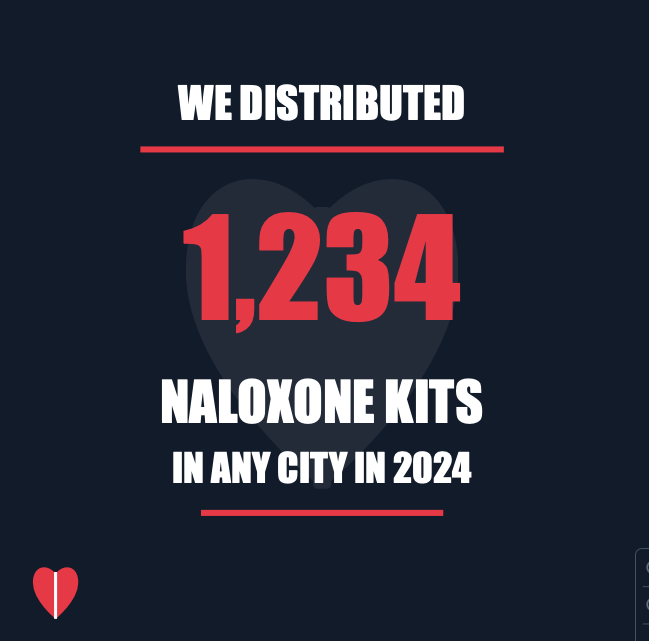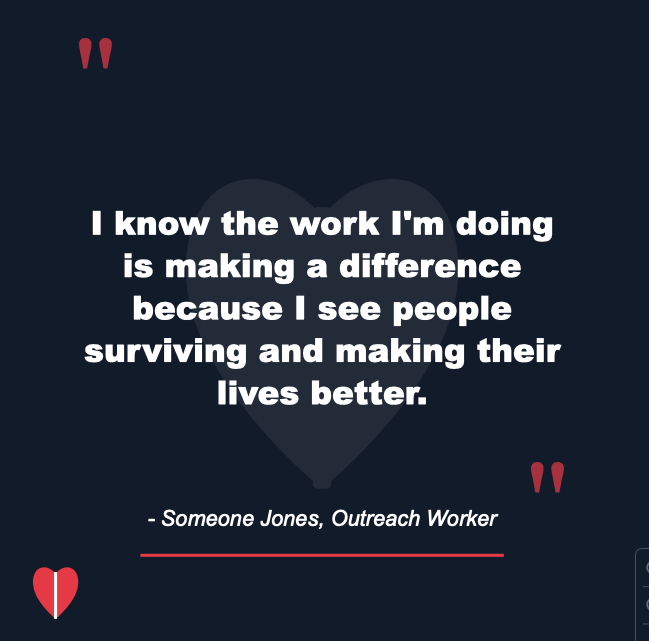by Nabarun Dasgupta & Adams Sibley
Sometime next week (second full week of May), CDC will publish 2024 predicted overdose numbers. Now is the time to get ready to tell your story. This guide will help with talking points.
What will the numbers say?
We predict the 2024 national overdose death count will be between 80,000 and 85,000, based on our estimates. As Kastalia at Filter points out, the CDC predicted national numbers are usually an overcount by +3,000 deaths. So the actual count will be lower, once those are finalized about 18 months from now. Next week's data release will compare the total count of predicted OD deaths 2023 vs. 2024; see how it's calculated.
We expect the total percent drop from January to December 2024 will be around -27% (give or take 1.1%).
As we pointed out last month, some states (like Nevada and Alaska) will show up orange on the map because of spikes that happened in late 2023 and early 2024. This does NOT mean that ODs are increasing in these states. Fatal ODs in ALL STATES are down from their peak. Here's our table of state-by-state numbers (which we will refresh as soon as the new CDC predicted data are released).
What's special about 2024?
After 3 decades of increasing overdose deaths, the -27% reduction is remarkable. Some folks taking credit for the decline will point to actions taken in 2024. But the truth (see map below) is that overdoses have declined gradually over a span of 3 years. This means that no single factor in 2024 can explain the drop nationally. We go into more detail here.

What's driving the drop?
Our team believes the drop in overdoses is due to 3 factors:
- Drugs: Which drugs reach the community, what do they look like, how much do they cost, and what do they do?
- People who use drugs: Who is using drugs now? Who is starting to use drugs? Who is stopping? Why?
- Behaviors: How do people use drugs? What do they do to keep themselves (and others) safe and healthy? How has community mobilized to prevent overdose deaths?
(See also: summary and deep dive)
(1) Drugs
Our field studies are indicating a general dissatisfaction with the synthetic opioid supply. We summarized the corresponding changes in the drug supply in the recent webinar linked below. Fentanyl is still around. Some fake pills may have a little less fentanyl per pill, which is within the normal expected fluctuation for fentanyl content. Some places are seeing more old school heroin displacing fentanyl. Xylazine is changing people's relationship to fentanyl, making some use less frequently or use smaller amounts. Other synthetic sedating adulterants like (dex)medetomidine are displacing xylazine. Collectively, these forces are driving people away from fentanyl; it's just not as good as it used to be. From one of our field studies, collected in late 2023:
I've been an addict for 30 years. If it's got xylazine, I don't want it. I don't want to do that. But this, it’s just everywhere now. I'm to the point where I'm like, in 30 years, I have not been able to quit doing dope. But I have days where I don't do it. And that's never happened. Never happened out of rehab, for 30 years. I've been a hard-core addict for about 30 years. And xylazine scares the fuck out of me. I don't want to lose limbs. I don't want to see people lose limbs. And it’s just nasty shit. (Michigan)
(People can call themselves whatever they want. But word choices matter.)
(2) People
The bulk of drug overdose deaths in US are happening in middle-aged folks, 68%. The biggest category (37%) are happening among 30-44 year-olds, those born between 1980 and 1995. Folks 45 to 60 years-old (born 1965 to 1979) make up an additional 31%. We are also seeing less initiation of illicit opioid use among Gen Z and Generation Alpha.

The US range is slightly wider than our neighbors to the north as CBC reported this week: "In Canada in 2024, 73 per cent of overdoses deaths happened to men aged 30 to 39, according to Health Canada."
But when you look by race x age, you see some birth cohort effects (aka generational effects by race), as you can see in this excellent visualization.

(3) Behavior
People who use drugs have always done things to protect themselves and stay as safe as possible. In addition, there has been a tremendous groundswell of public health interventions that have helped. This is thanks in part to opioid settlements, but also crucial federal funding. We highlighted these stories in last month's newsletter. Naloxone distribution, expanding drug treatment access, Medicaid expansion to cover more people with more treatment, and many other interventions, are collectively making an impact. As we presented in a webinar last week, a major part of what is driving the decline is the interventions on the ground:

Tell Your Story NOW
All your hard work deserves to be shared. Social media is helpful. Also reach out proactively to local news organizations TODAY, before the numbers are published. Share this post, give them a heads up what's coming.
For socials, here's a basic 3 part formula:
- One "Big Ass Number" that conveys impact. Try using social math (“We’ve served 1,140 participants this year – that’s enough people to fill a high school gymnasium!”). It could also be a very very simple graph.
- Photo of your staff person doing the work, in a setting of implementation (with permission).
- A 1 sentence quote. Organization logo optional.
AI Prompt
We used Claude.ai to make short work of this. You can optimize the prompt below with your own words, or have a Canva/Insta/TikTok hero do the task. The important thing is to get things out quickly. Get these out on social media right away. Don't overthink it. Tag #overdose and whatever else is trending on this topic next week.
Suggested Prompt:
Make 3 square png posts for social media to convey public health impact of our program on reducing overdoses. Use consistent eye-catching font and color, based on colors in individual.PNG
- Text "We distributed 1,234 naloxone kits in Any City in 2024" with the number (not year) in very big centered font. Make text fill square.
- Combine photo individual.PNG with logo.PNG by placing logo in bottom right corner [this didn't work in Claude but other AI might be able to]
- Using same background as #1, text: "I know the work I'm doing is making a difference because I see people surviving and making their lives better. - Someone Jones, Outreach Worker" Fill frame with text.



Example output
What to do next
Public health is working. Keep going! Here are the 6 things we advocate for:
- Use settlement funds wisely
This money was intended to support your mission. - Be critical - not all interventions are created equal
Keep going with interventions that are proven to work. - Ask who is being left behind
Improvements are not uniform. - Get local information
Employ people with the most recent drug use experience. - Address other drug-related harms
Skin wounds, hepatitis, endocarditis, etc. stem from unregulated drug supply. - Properly resource medical examiners
The key to faster and higher quality data.



